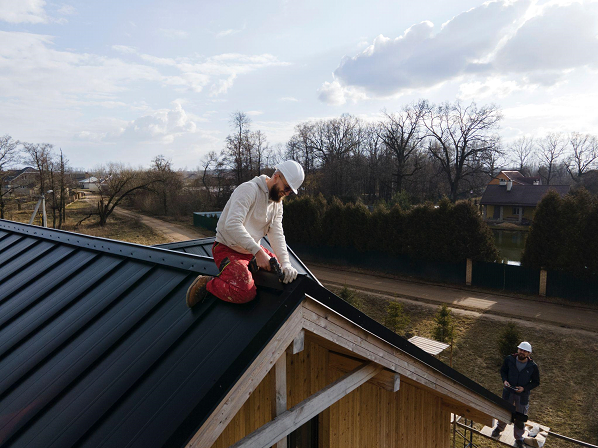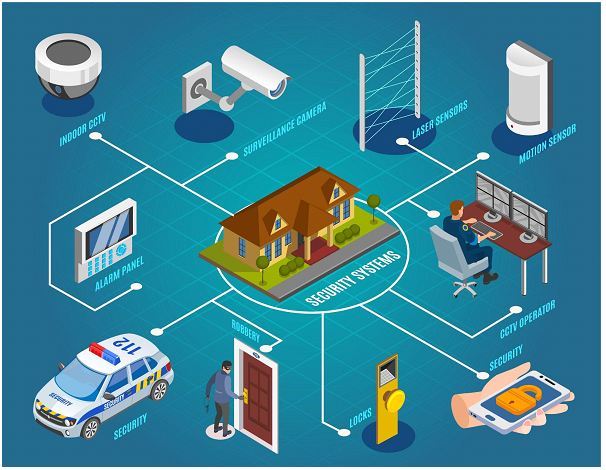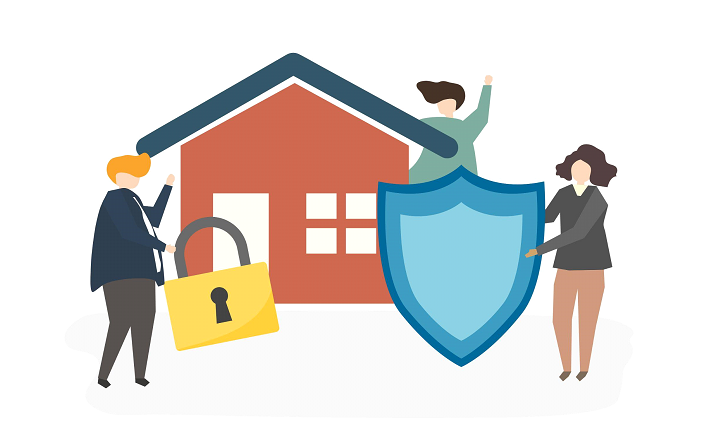Trying to protect your home from unexpected dangers can feel overwhelming. Between natural disasters like hurricanes and wildfires or threats of burglary, there are many risks facing families.
This article will outline practical steps for securing your property against various threats. Whether heavy storms batter the landscape or thieves-case neighborhoods, a multi-layered protection strategy keeps your most valuable asset – your home – fortified. We’ll look at reasonable upgrades for foundations, roofs, utilities, and more. Ensuring buildings and possessions withstand Mother Nature’s fury or an intruder’s force helps provide relief during troubling events.
Let’s get started with recommendations for hardening the key structural layers forming your safe shelter’s foundation.
Make Your Home Stronger from the Ground Up
The foundation is the base that holds up your entire home. If high winds, flooding, or other dangers come, you want that base to stay sturdy, so the rest of your house stays safe too. You can install impact-rated hurricane windows or shutters and storm panels on windows. Just like upstairs, these protect against broken glass and flying debris during hurricanes. Look for types that are strong enough to block intruders.
Seal any cracks in your foundation walls. Push flexible sealant into holes to prevent water from seeping in during floods. Wet basements are weaker and can get moldy, too.
Consider a French drain around your home’s perimeter. This is a buried pipe with holes that collects rain runoff and sends it far away, preventing puddles that can lead to leaks inside your walls.
Make sure your doors and garage are well-braced, too. Reinforce the hinges, door frames, and garage door tracks with extra screws so the wind can’t blow them open or tear them apart. A good seal for the bottom helps block water intrusion.
Secure Your Roof to Shelter What’s Below

Your roof works hard every day to shield everything inside your home. When storms threaten, it needs to stand up to high winds, pounding rain, and flying objects.
Inspect your roof at least once a year, preferably before hurricane season starts. Look closely for missing, cracked, or curled shingles that could leak or blow away when the big winds come.
To reinforce your roof for bad weather, consider stronger materials like metal, fiberglass, or speciality composite shingles rated for high winds. They’ll last much longer than plain old asphalt.
Be sure all of your roof’s flashing—the small metal pieces at joints—is securely attached. Over time, flashing can rust and loosen, letting water sneak inside and damaging the ceiling below during big rainstorms.
Trim any trees close to your home so branches don’t scratch or peel up your roof shingles in stormy weather. Falling trees are also a hazard, so keep a safe distance.
Making some simple roof checks and repairs helps protect what’s under your roof from rain leaks or wind damage.
Electrical and Plumbing Protection
Your home’s electricity, water, and heating all work hard to keep you comfortable. But during floods or outages, you need them to work even harder.
Check where your home’s main power line enters and any electrical boxes. If possible, raise them at least 18 inches above the highest expected floodwater. Wet circuits can cause fires or electrocution.
In colder areas, insulate outside water pipes so they don’t freeze and burst as easily in icy storms. Losing water pressure can mean no showers or toilets until it’s fixed!
If power outages are common, look into a generator to run essentials like lights, refrigeration, and sump pumps. Make sure it’s safely installed away from household gases and water.
Install ground fault circuit interrupters (GFCIs) near water sources like the kitchen and bathroom to instantly shut off electricity in wet areas, preventing shocks.
Know where your home’s main water shut-off valve is located. It’s handy to turn off flooding or busted pipes quickly during emergencies to limit damage.
Partner with Professionals Nearby
It’s impossible to prepare for every emergency alone. Connecting with others in your community builds a layer of support when trouble comes. Check if your local fire department offers free home safety checks. Firefighters know best what can put your home at risk and how to fix it.
Find out if nearby weather stations issue neighborhood-level alerts. Know exactly when storms are headed your way, so you don’t get caught by surprise. Talk to your home insurance agent. Make sure your coverage will see you through fires, floods, and other disasters. Document your possessions in case repairs are ever needed, too.
If neighborhood watch groups or community emergency response teams (CERT) exist, join them. You’ll both help others and have extra trained helpers yourself during blackouts or evacuations. Ask experienced neighbors for advice on preparing your home too. A little knowledge from local experts goes a long way.
Home Security Systems

Whether facing storms, fires, or burglars, security systems can help you feel safer. These options quickly connect to emergency responders. For homes far from others, think about alarms monitored by professionals. Bright motion lights outside and warning signs can deter people at night.
Lifesaving detectors help find smoke and deadly gases like carbon monoxide. You can install systems that send fast alerts that call for help before things get dangerous. Properties stay watched even when no one is home. Advanced sensors pair security with features that help first responders right away. Floor plans and any special needs inside your home stay available right away to rescuers, which can help them find you faster and better.
Talk to experts about new ways to see better at night or through smoke. Installing high-tech protections lets you watch round-the-clock from a distance. This ensures you live peacefully, knowing backup will arrive fast if something goes wrong.
See https://www.forbes.com/home-improvement/ for home security dos and don’ts.
Check Home Coverage and Plans
Preparing for the unexpected takes teamwork. Linking with services outside your property strengthens your safety net. Contact insurance providers yearly. Make sure policies cover rebuilding from disasters like fires, floods, and winds. Know what your belongings can be fixed for, too.
Find neighborhood disaster plans through community groups or leaders. Decide together how to check on elders or people with special needs if they are evacuating or lose power. Know local evacuation routes and shelters ahead of big storms. Having backup plans saves stress when hurricanes threaten, or fires rage nearby.
Mark your utility shutoffs outside for emergencies like gas or water leaks. Quick closing limits damage until help can arrive. Discuss emergency readiness with family. Practicing escape plans and meeting places let’s all act fast when seconds count, saving lives.
Conclusion
In closing, the practices shared should provide a helpful starting point for all-hazard home protection efforts. While disasters cannot always be prevented, remaining knowledgeable and proactive strengthens defenses wherever possible.
The most important thing is making your home stronger on the inside and outside. Check the foundation, roof, pipes, and wiring to keep water and wind out. Install alarms that call firefighters fast if smoke or gas comes.
Work with others nearby, too, for more support. Professionals like firefighters and insurance people know best how to protect your property from disasters. Neighbors helping each other means no one faces dangers alone.
Always keep learning newer ways to secure your most valued things, your family. Even small changes today mean less damage tomorrow if storms come or other troubles happen.



